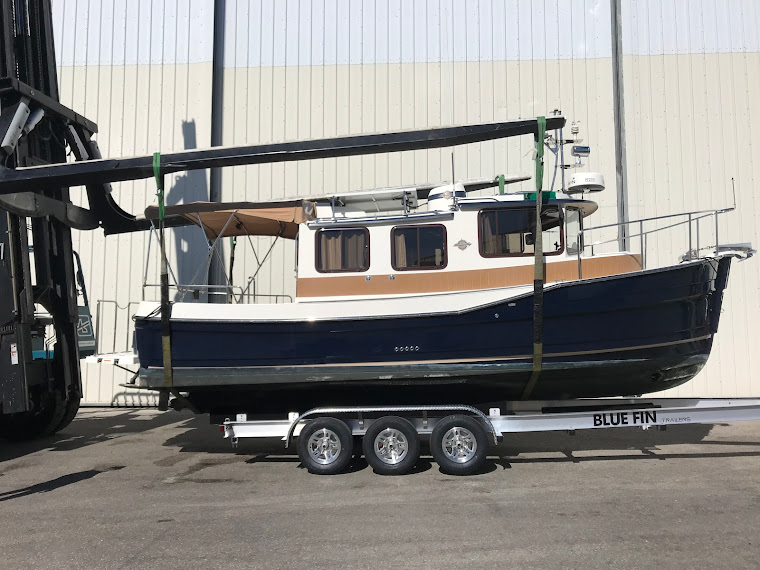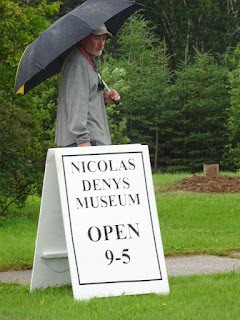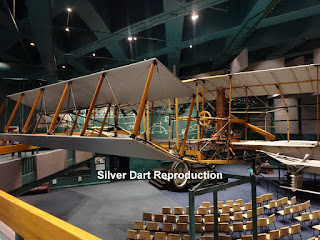Off
the grid in the Bras d’ Or Lakes
From
Pictou we headed for the Canso Strait that slices between Cape Breton Island
and the mainland of Nova Scotia. Enroute
we spent a quiet night in the peaceful anchorage of Havre Boucher. In the morning we were a short run up to the
lock that controls the tidal flow which used to rip through the Canso
Strait.
The predicted winds held off so
we made for the canal which leads to the southern entrance to the Bras d’ Or
Lakes – really only one body of water and not a lake at all but an inland
sea. The heritage canal was built to
make it possible for boats to transit through the lakes. Previously only small
boats could make the trip and they were dragged over the land separating the
lake from the straits. The unique tidal
lock with double doors at each end is now operated by Parks Canada, and they
welcomed us to spend the night on their wall.
It was a protected spot which was fortunate since during the night the
storm that had been predicted for the afternoon arrived with a vengeance. We were woken to banging noises and bumps
even in this low secure spot and in the morning found the deck spotted with
leaves.
Before
the storm arrived we had time for a walk in the town of St Peters that boasts
every convenience and two small museums.
The first we visited is the family home of Wallace R. MacAskill – the
photographer whose work is the basis for the famous Bluenose postage stamp. The
small museum displays many examples of his work, some even hand colored by his
wife. Most are of his favorite subject –
boats and the people of his native Nova Scotia.
The
Nicolas Denys museum was an interesting mixture of vintage items displayed in
the reproduction of the Denys trading post.
Denys was one of the earliest traders to live in St Peters.
In
the morning, although the sun was peeking out, the winds had not abated;
nevertheless, we locked through hoping to find things calming down on the lake
ahead by the time we reached open water.
There is a long winding passage from the canal to the lake, but it was
not long enough. When we reached the
main lower lake we found ourselves facing a fierce headwind which was kicking
up serious wave action so decided to take cover in a protected cove and wait
out the weather. The closest hidey hole
was Cape George Harbour – reported to be one of the most popular anchorages on
the lake. It was delightfully calm and
an easy place to relax for an afternoon.
In
the morning we pulled anchor to find a flat lake misted with wisps of fog and
were soon dropping the hook in Baddeck Harbour.
(Before reaching Baddeck we had to transit the Barra Narrows. This small gap separates the lower lake bays
from the upper ones.)
Baddeck
is famous for welcoming sailors and as the summer home of Alexander Graham Bell
and his family. Although the estate he
built with his wife is not open to the public, there is a Parks Canada museum
in his honor that we visited. Our museum
guide narrated a slide show on the story of Alec and his wife, Mabel paying
particular attention to the role Mabel played in the life of the inventor. Bell was mostly interested in pure ideas and
information, but he had little interest in exploiting the commercial value of
his inventions. However, since he needed money and position to be the
successful suitor for Mabel’s hand, he was motivated to finish and sell his
telephone invention. In many ways, Mabel
was the organizer of the pair and the one to manage the practical side of his
life which freed Bell to pursue his experiments. The museum displayed a reconstruction of the
flying machine developed by Bell and his young associates as well as a
hydrofoil which held the speed record for its time.
Since
this area is a major tourist attraction we were unable to snag a rental car for
a land tour of the Cabot Trail – just another reason to return to this
beautiful part of the Canadian Maritimes.















































No comments:
Post a Comment